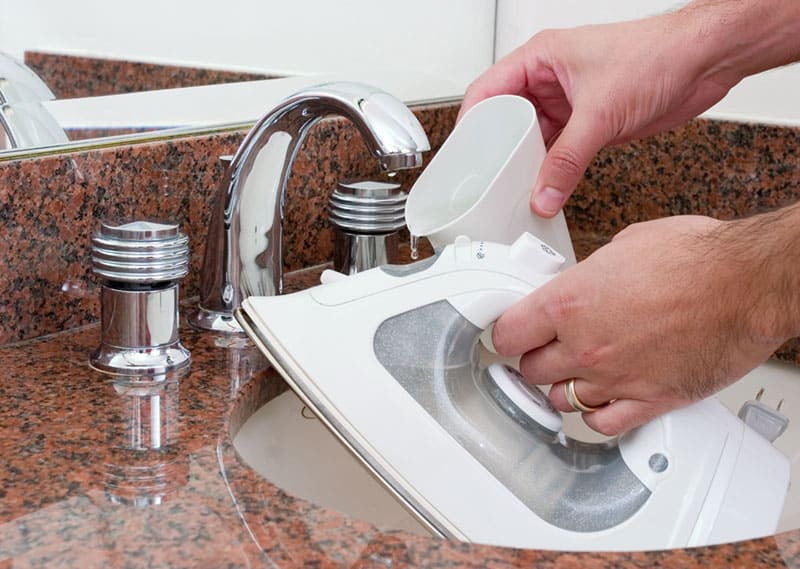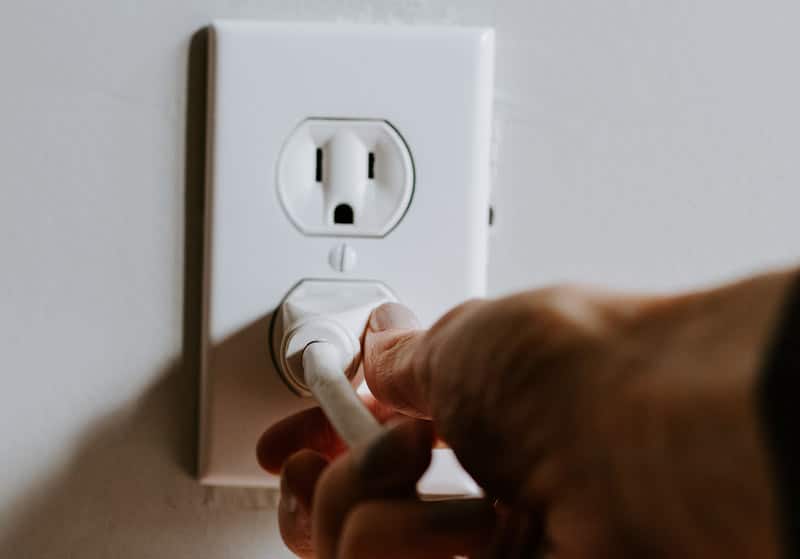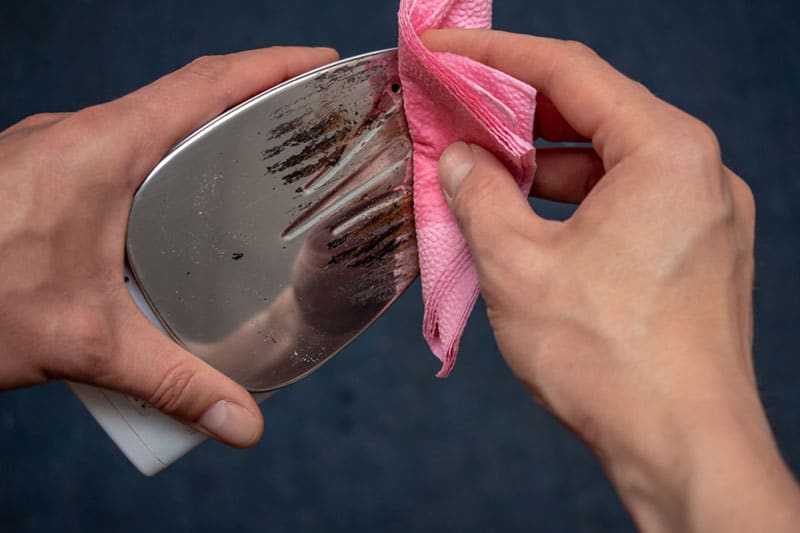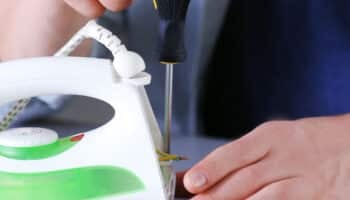Is your iron not getting hot?
You’re not alone! Being unable to use your iron because of heating issues can be super frustrating.
But don’t worry; I’m here to help.
If your iron is not heating up fully, please fill the tank, adjust the temperature, check the power outlet and cable, or remove the limescale. If the issue persists, you’ll need to replace the heating element, pump, or thermostat.
Read on to learn more about how to fix a broken iron!
How to Fix an Iron That Won’t Heat up Properly? 8 Steps
Different reasons can explain why your iron is not heating up properly. Luckily, there are various solutions you can try to forget all about the temperature problem.
#1 Fill the Tank
When I see an iron having heating issues, I always check the water tank.
You see, irons need to have water in their tank to heat up properly. So, the first step in the steam iron repair process is to fill it with one of the following:
- Distilled water
- Demineralized water
- 50% demineralized water mixed with tap water
Make sure your iron is plugged out while you fill it with water. Then switch the iron on and see if it heats up properly. If it doesn’t, meet me at the next step.

#2 Adjust the Temperature
Do you feel like your iron’s soleplate isn’t quite hot enough? Then it’s probably because you need to adjust its temperature.
In my experience, certain items of clothing will need more heat for them to iron well, such as:
- Corduroy
- Heavyweight cotton
- Woven wool
Try increasing the temperature slightly on your iron’s dial to solve the issue.
#3 Check the Power Outlet
A faulty power outlet could also cause your iron’s heating issue, so you must inspect it.
Try plugging your iron into a different power outlet. If it begins to heat up properly, you can conclude that there is a problem with your outlet. You will need to contact an electrician to fix it.

What if plugging the iron into a different power outlet didn’t solve the problem? Then move on to the next step in this article.
#4 Inspect the Cable
If your iron is still not heating up, please inspect the power cable.
If the power cable is damaged, it could be causing a short and be the culprit of an intermittent power problem that leads to heating issues.
What are the indications of damage that you should be wary of? Here are a couple of warning signs:
- Fraying
- Bite marks
- Discoloration
If the cable shows signs of damage, you must replace it by *removing the soleplate and changing the cable.
*TIP: Make sure you can get a replacement cable for your iron before you begin the repair. If you can’t, you will have to get a new iron.
If the power cable is not the source of the issue, jump to the next step in this article.
#5 Remove the Limescale
I tend to find that when irons have heating issues, it’s typically because of a limescale buildup on the soleplate.
Limescale can clog the plate and prevent it from producing as much steam as it should, making it seem like it isn’t heating up as well as it did.
You’ll need to clean the soleplate while the iron is plugged out of the mains and cool to fix the issue. You can clean the soleplate with a non-abrasive cloth and white vinegar.
When you have finished removing the limescale, wipe the soleplate with a damp cloth to remove the vinegar smell. Then, turn the iron on to see if it works normally again.
To avoid limescale buildup in the future, put distilled or demineralized water in your iron instead of tap water, especially if you live in a hard water area.

#6 Replace the Heating Element
The heating element is probably faulty if your iron is still not hot enough.
Replacing the heating element is necessary if it has lost its electrical properties or no longer responds.
However, it’s worth noting that replacing your iron’s heating element is not straightforward. Getting hold of the parts is often difficult, especially when the iron is old. I find that, in most cases, you’ll save yourself time and a pretty penny by replacing the iron altogether.
#7 Replace the Pump
If your iron is not heating up or producing any sound or steam, there’s probably an issue with the pump.
The pump pushes the water from the iron tank to the steam supply. If it doesn’t work, the iron will not be able to get as hot as it should and will not steam.
If there is an issue with the pump, you will need to replace it. But, as with the previous step, searching for the right pump for your iron is like looking for a needle in a haystack. My usual advice is to get a new iron.
#8 Change the Thermostat
The thermostat dial on your iron controls its temperature. As you turn it, it should make the soleplate hotter or cooler. But what if the temperature gauge is broken?
If the thermostat dial on your iron is not changing the temperature, you will need to replace it. Again, replacing the dial can be more hassle than it’s worth. If your temperature dial is faulty, I recommend a new iron.
Ironing Out the Details: Fixing Your Iron’s Heating Issues
Hopefully, now you know how to fix an iron that won’t heat up.
Remember that if your iron has heating issues, you must fill the tank, adjust the temperature, remove limescale buildup, and inspect the power outlet and cable. If the problem persists, don’t forget to check the heating element and thermostat.
Thank you so much for reading! Please check out our other related posts if you found this article helpful. You could even sign up to our email list.
Have a great day!
-Craig








